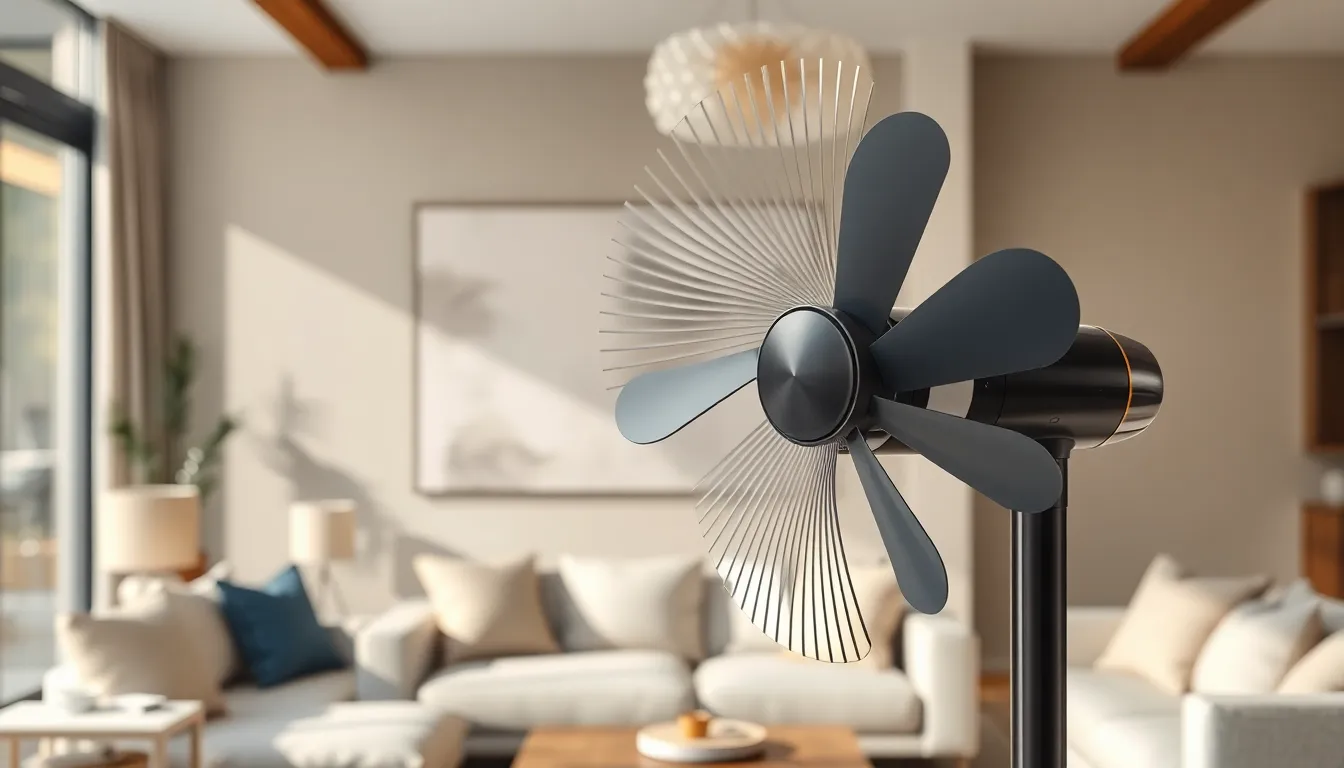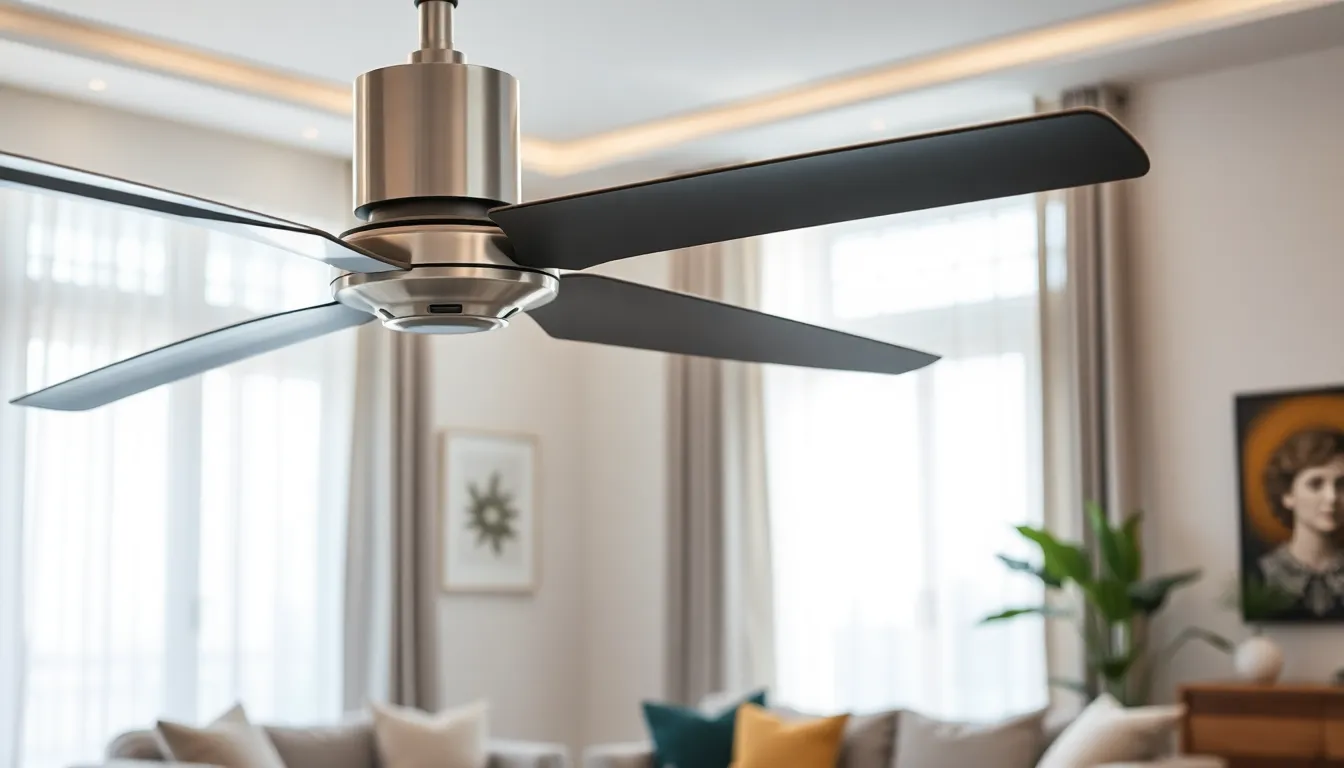Table of Contents
ToggleIn today’s fast-paced world, high-performance fans are becoming essential for various applications, from industrial settings to residential spaces. These fans not only enhance air circulation but also improve energy efficiency, making them a smart choice for anyone looking to optimize their environment. With advancements in technology, high-performance fans deliver powerful airflow while minimizing noise and energy consumption.
Whether it’s for cooling a workspace, ventilating a home, or supporting equipment in demanding environments, the right fan can make all the difference. Understanding the features and benefits of high-performance fans helps consumers make informed decisions that lead to better comfort and productivity. As the demand for efficient and effective cooling solutions grows, exploring the world of high-performance fans reveals options that cater to diverse needs and preferences.
Overview of High-Performance Fans
High-performance fans serve crucial roles in a variety of environments, from industrial facilities to residential spaces. They maximize air circulation, contributing significantly to improved indoor air quality and comfort. These fans utilize advanced technologies, such as brushless motors and aerodynamic designs, to generate strong airflow while minimizing energy consumption.
High-performance fans often feature variable speed settings, allowing users to adjust airflow rates according to specific needs. Many models incorporate smart technology for enhanced control, enabling integration with home automation systems or remote management through mobile applications.
Noise reduction is another important aspect; many high-performance fans are designed to operate quietly, making them suitable for environments where sound levels matter, such as offices or bedrooms. Their lasting durability and low maintenance requirements reduce overall operational costs, aligning with sustainability objectives.
Given the growing demand for efficient cooling solutions, an understanding of high-performance fans’ features and benefits becomes essential. Increased energy efficiency not only lowers utility bills but also helps reduce environmental impact, making these fans a practical choice for eco-conscious consumers.
Benefits of High-Performance Fans

High-performance fans offer a range of advantages that enhance both comfort and energy savings in various settings. These benefits include increased efficiency and noise reduction.
Increased Efficiency
High-performance fans demonstrate remarkable energy efficiency. Equipped with brushless motors and aerodynamic blade designs, they deliver powerful airflow while using less energy. This technology allows for significant energy savings, with some fans consuming up to 50% less electricity compared to conventional models. Variable speed settings facilitate custom airflow solutions tailored to specific needs, enhancing overall performance. Additionally, many fans incorporate smart features, such as timers and remote controls, allowing users to optimize air circulation more effectively.
Noise Reduction
High-performance fans prioritize quiet operation. Many models are engineered to minimize noise, making them suitable for environments where sound matters, such as offices or bedrooms. Features like vibration dampening and improved blade designs contribute to a quieter experience. Users benefit from enhanced comfort without the distraction of excessive noise. This balance between powerful airflow and serene operation makes high-performance fans a practical choice for any space.
Types of High-Performance Fans
High-performance fans come in various types, each designed for specific applications and benefits. Understanding these types helps consumers choose the right fan for their needs.
Axial Fans
Axial fans generate airflow parallel to the fan’s axis. They are ideal for cooling large areas and provide high airflow with relatively low pressure build-up. Common applications include ventilation systems, cooling towers, and industrial settings. Axial fans utilize a series of blades that efficiently move air in straight lines, making them suitable for environments requiring extensive air transfers. They often feature designs that enhance efficiency, maximizing airflow while minimizing energy consumption. Models with adjustable speeds further optimize performance based on specific cooling or ventilation requirements.
Centrifugal Fans
Centrifugal fans create airflow perpendicular to the fan’s axis. They excel in applications that require high static pressure, such as ductwork and HVAC systems. These fans draw air inward and expel it at 90-degree angles, generating greater pressure than axial fans. Centrifugal fans are preferred for tasks requiring air to travel through filters or long duct runs. Various blade designs, including backward-curved and radial, influence performance characteristics. Efficient centrifugal fans maintain high airflow rates while remaining energy-efficient, making them suitable for both residential and industrial applications. Variable speed options further enhance their versatility, allowing users to adjust performance according to demand.
Applications of High-Performance Fans
High-performance fans are widely used across various industries and home environments. Their versatility and efficiency significantly enhance airflow management, making them essential tools.
Industrial Use
High-performance fans play a crucial role in industrial settings. They provide reliable ventilation in factories, warehouses, and production facilities. Axial fans efficiently cool large areas, ensuring optimal working conditions for employees and machinery. Centrifugal fans excel in high static pressure scenarios, such as in HVAC duct systems, effectively transporting air and maintaining temperature control. These fans also contribute to dust and fume extraction, enhancing workplace safety. With energy-efficient designs, many industrial fans consume significantly less electricity while delivering powerful airflow, aligning with sustainability initiatives.
Residential Use
High-performance fans are increasingly popular in residential applications. They provide efficient cooling and air circulation, improving comfort in living rooms, bedrooms, and kitchens. Many models feature sleek, modern designs that integrate seamlessly into home aesthetics. Variable speed settings allow homeowners to customize airflow based on specific preferences and needs. Smart technology capabilities enable integration with home automation systems, allowing remote control and scheduling for energy savings. These fans operate quietly, making them ideal for noise-sensitive environments, enhancing relaxation and productivity at home.
High-performance fans represent a significant advancement in air circulation technology. Their ability to deliver powerful airflow while maintaining energy efficiency sets them apart in both industrial and residential applications. With features like variable speed settings and smart technology integration, these fans offer users unparalleled control over their environment.
The quiet operation and durability of high-performance fans make them a practical choice for any setting. As more consumers recognize the benefits of these fans, they’re likely to become a staple in optimizing comfort and productivity. Exploring the various options available ensures that individuals can find the perfect fan to meet their specific needs, enhancing overall satisfaction and efficiency.





